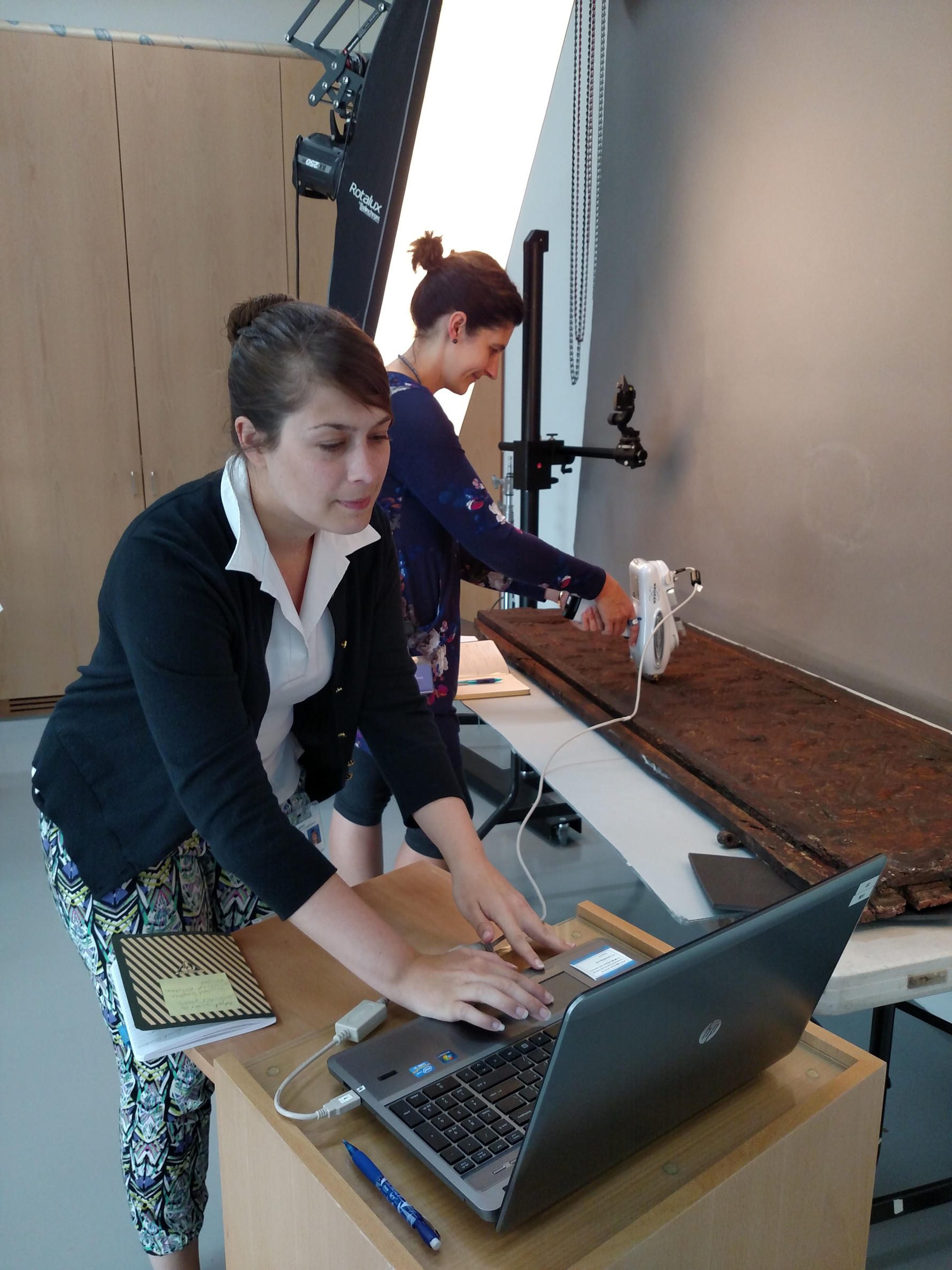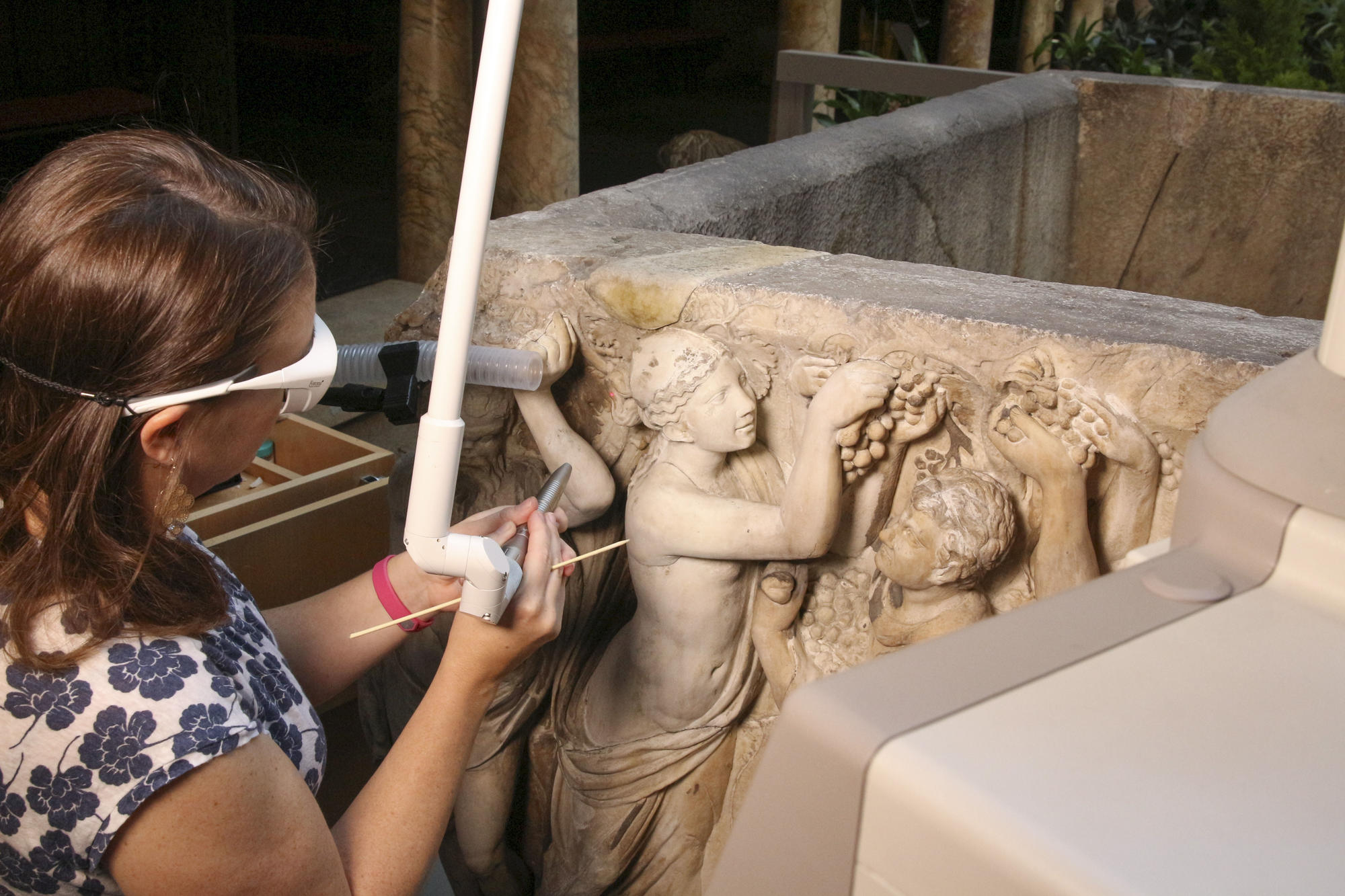Technical research conducted on a work of art can lead to a greater understanding of its material composition, condition issues, and the artist’s working process. To gather the fullest understanding of a work of art, our Conservation Department often uses a combination of imaging, analytical, and microscopy techniques.
Imaging techniques include visible and ultraviolet digital photography, infrared reflectography, and reflectance transformation imaging. These techniques can help conservators to characterize varnishes and restorations, reveal underdrawings (or an artist’s working changes), as well as highlight surface topography that is not always obvious to the naked eye.
Our Conservation Department also has a portable X-ray fluorescence spectrometer, which is used for non-destructive elemental analysis. This can help conservators to identify a wide range of inorganic materials such as: pigments, glazes, metals, corrosion and stone. Fiber microscopy is used to identify fiber types, and cross-section microscopy can inform conservators about the paint layer history of a painting or painted object from a sample as tiny as a couple of millimeters. When additional analyses are needed, we collaborate with colleagues at neighboring cultural institutions and even hospitals for techniques like X-radiography or CT scans. All of these complementing technologies help us learn more about the art in our care, and also informs the dissemination of our research to professional and public audiences.

Objects Conservator Jess Chloros (right, back) and TKTK (left, fore) use the portable X-ray fluorescence spectrometer.
Our Conservation Department also utilizes technology to assist in object treatments when possible, and is one of the few labs in the United States actively using laser equipment to clean objects in the collection. Our team uses two different laser units, which are well-adapted for different purposes. The Nd:YAG laser is most commonly used to clean stone objects, including marble and alabaster, while the Er:YAG laser has the potential to target organic compounds such as degraded varnishes on paintings. As with all technical tools used by conservators, research into new applications for laser technology is ongoing.

John L. and Susan K. Gardner Director of Conservation Holly Salmon using an Er:YAG laser to clean the Farnese Sarcophagus.